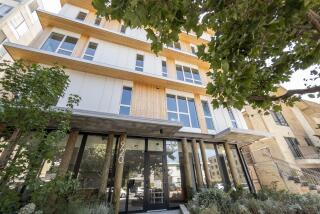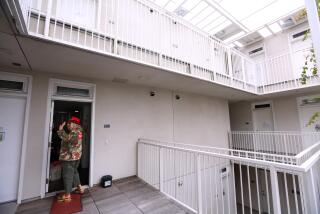Accelerating Measure R’s job creation
The American economy is intractably stuck. No one is creating jobs.
Not corporations, even though they’re earning record profits and are sitting on nearly $2 trillion in cash. Their profit surge, however, comes from renewed sales abroad and relies on increased productivity, reduced wages and a diminished labor force at home. Not small businesses, which still cannot obtain credit from the banks nor resume hiring until U.S. consumers resume consuming. And most assuredly not the federal government, whose stimulus package saved millions of jobs, but not enough to convince the public to support the second stimulus the economy now desperately needs.
Nobody’s hiring — except, just possibly, the voters of Los Angeles County.
When L.A. County voters ratified Measure R in the 2008 election, few envisioned that they’d be setting up what might become the only major jobs program in the country two years hence. In supporting Measure R, Angelenos voted to levy a half-cent-on-the-dollar sales tax on themselves for the next 30 years, generating roughly $40 billion that would go to the construction of designated rail lines and road improvements in all parts of the county. With backing from business, labor and environmentalists, and funding raised by Mayor Antonio Villaraigosa, the measure cleared the two-thirds voter approval threshold even though the economy was cascading downward.
What hardly anyone realized in late 2008 was just how devastating and enduring the downturn would be, particularly in California. Ten of the nation’s 12 metropolitan areas in which unemployment is at least 15% are in California, the Labor Department reported last week. The primary culprit is the collapse of construction. Since June 2006, the state has lost a mind-boggling 43% of its construction jobs — a little more than 400,000 overall. Though some other states are seeing a small uptick in construction, California clearly is not, with unemployment in the sector continuing to rise.
With the economy in tatters, some of Measure R’s sponsors, Villaraigosa in particular, concluded that accelerating the massive public works projects that the measure funds provided a way — in all likelihood, the only way — to get Southern California’s economy moving again. Problem was, the $40 billion in tax revenue would be collected — and the projects it funded would be built — over a 30-year period. If the county transportation agencies could sell bonds to fund the construction of those projects in just 10 years (the bonds to be repaid over three decades by the $40 billion in sales taxes), then all of Measure R’s promises — for a network of rails, for cleaner skies, for more jobs — could be redeemed more quickly.
And more cheaply. Building the rail lines and improving the roads over 30 years, says Denny Zane, the executive director of Move L.A., the group coordinating support for the program, would cost an estimated $18.7 billion, but building them in the next 10 years — eliminating the 20 subsequent years of rising costs — would cost just $14 billion.
It would also create jobs here and now. The Los Angeles County Economic Development Corp. puts that number at 165,000, but, says Zane, estimates on transportation construction from the Brookings Institution suggest that number may be far higher.
The problem is how the county can avoid paying interest on the bonds it sells. For that, Los Angeles has turned to the federal government, not for an appropriation, but for loans to be repaid by the sales tax. But Washington is not in the business of awarding loans, even when they’re secured by dedicated revenue streams. The mayor has been lobbying assiduously for the loans, and for Congress to change some laws enabling those loans. He’s been joined by just about the broadest political coalition L.A. has ever seen — including unions, environmental organizations and business groups, like the Chamber of Commerce and the Valley Industry & Commerce Assn. Even Ken Orski, a writer on transportation issues who is frequently published by the libertarian Reason Foundation, told a National Journal symposium that the 30/10 project, as it is now called, was locally controlled, fully funded — all good things even on the libertarian right — and could be “the harbinger of a major revolution” in financing transportation infrastructure.
Coalitions this broad occasionally are assembled, but it usually takes something like a war with the Nazis to put them together. It’s a testament to how many of L.A.’s needs the 30/10 project meets that so many disparate groups and individuals support it. At a time when federal investment in the nation’s future is blocked by deficit demagogy, the feds should at least help localities that have committed their own funds to building for tomorrow, and to doing something that nobody else is doing: creating jobs.
Harold Meyerson is editor at large of the American Prospect and a columnist for the Washington Post. He is doing a six-week guest columnist stint on our Op-Ed page on Tuesdays.
More to Read
Get the L.A. Times Politics newsletter
Deeply reported insights into legislation, politics and policy from Sacramento, Washington and beyond. In your inbox three times per week.
You may occasionally receive promotional content from the Los Angeles Times.










